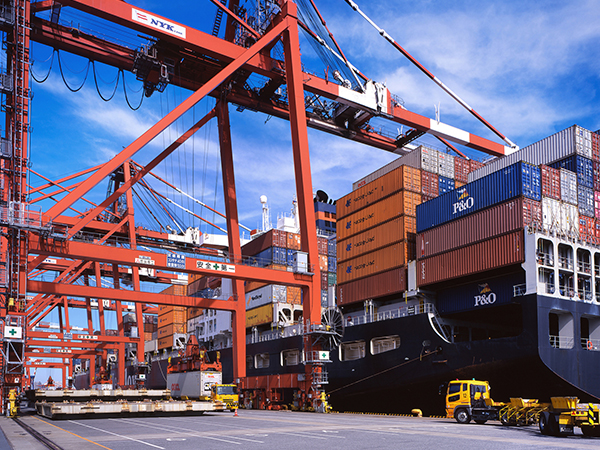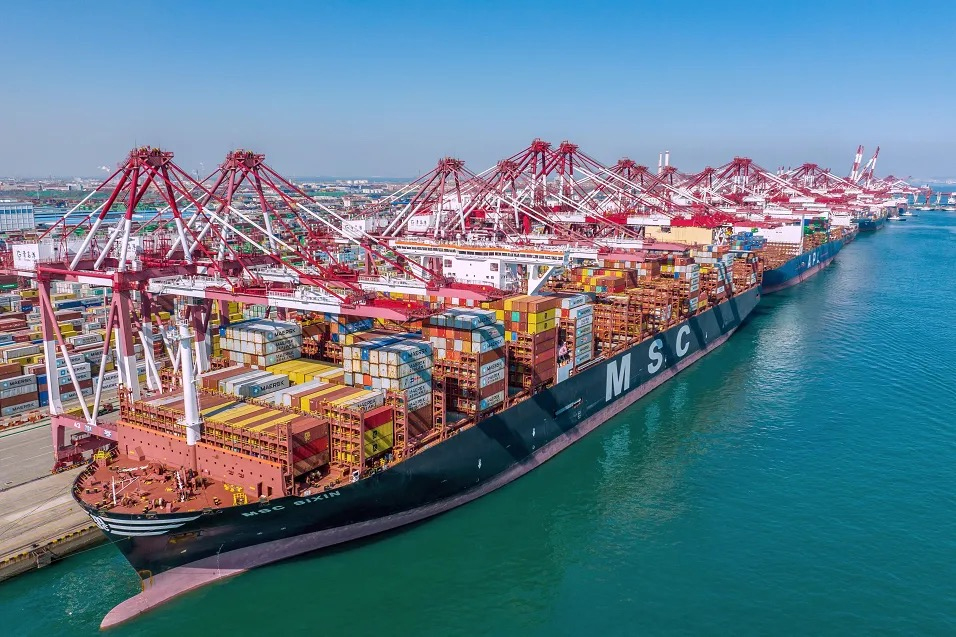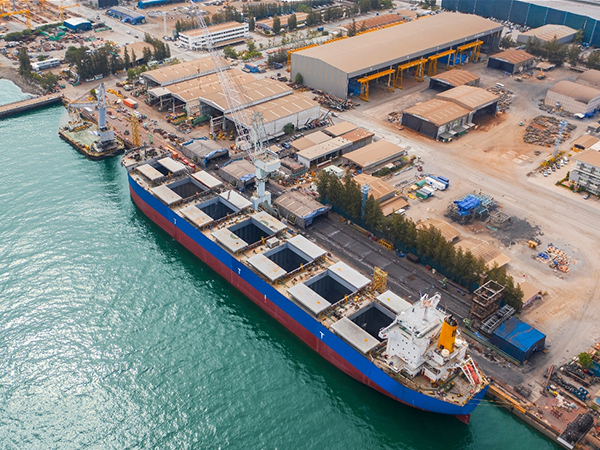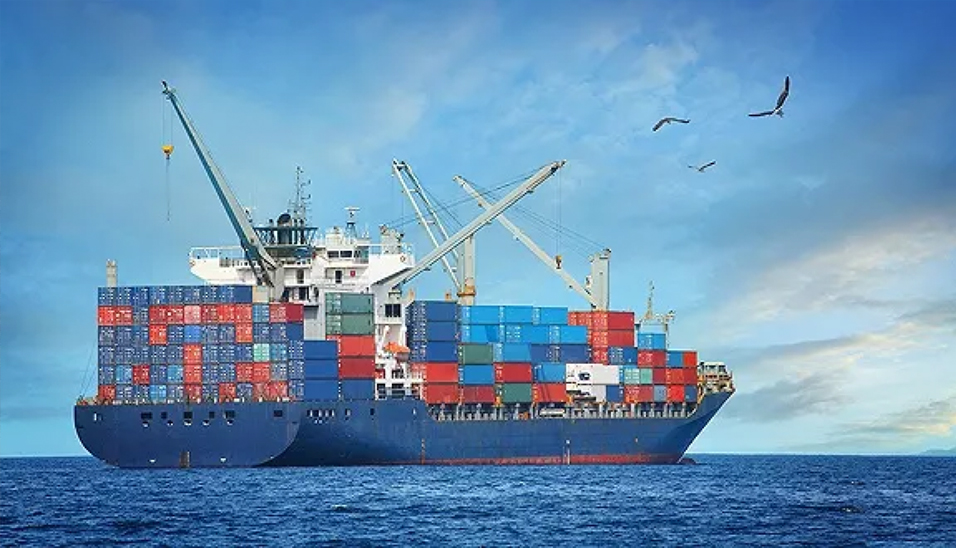In the fast-paced world of international trade and logistics, efficient, reliable, and cost-effective shipping methods are vital to ensuring smooth operations. One of the most widely used and preferred shipping methods for global transportation is port-to-port shipping. This process involves transporting goods between two designated ports, and it is particularly beneficial for bulk shipments, including standard dry goods, specialized freight like refrigerated items, and hazardous materials.
Whether it's a small shipment or a large volume of cargo, port-to-port shipping is a key component of the global supply chain, providing an efficient way to move goods across international borders. Companies like Tiger International Logistics Co., Ltd., which offers integrated logistics services including air freight, sea freight, warehousing, and distribution, excel in facilitating port-to-port shipping for clients around the world, particularly in regions such as Singapore and Malaysia.
In this blog, we will explore the top uses of port-to-port shipping, how it benefits international trade, and why businesses should consider it for their logistics needs.
What is Port-to-Port Shipping?
Port-to-port shipping refers to the transportation of goods between two designated ports—origin and destination—using sea or air transport. The key feature of this method is that it involves a streamlined process where the shipper handles the cargo at the point of departure, and the recipient or their logistics provider takes responsibility at the port of arrival.
This type of shipping is commonly used for bulk shipments, large volumes of goods, and various types of specialized freight, such as refrigerated (reefer) containers, hazardous materials, or oversized cargo.

Top Uses of Port-to-Port Shipping
1. Bulk Goods and Commodities
One of the most common uses of port-to-port shipping is the transportation of bulk goods and commodities. This includes a wide range of products such as agricultural goods, minerals, chemicals, and manufactured materials. The shipping process is highly efficient for these types of cargo, as they can be loaded and unloaded quickly and in large quantities.
For instance, Tiger International Logistics Co., Ltd., with its expertise in sea freight, efficiently handles bulk shipments between ports, ensuring that businesses can receive or deliver large shipments without delays.
2. Refrigerated Goods (Reefer Containers)
When it comes to transporting temperature-sensitive goods, such as perishable food items, pharmaceuticals, or chemicals, port-to-port shipping using refrigerated containers (reefers) is the ideal solution. Refrigerated goods must be transported under precise temperature conditions to ensure they remain fresh and compliant with health and safety regulations.
With their network spanning across Singapore, Malaysia, and other international regions, Tiger International Logistics Co., Ltd. offers specialized services to ship refrigerated cargo efficiently, ensuring that the goods are delivered in optimal conditions.
3. Hazardous Materials (Hazmat)
Port-to-port shipping is an ideal method for the transportation of hazardous materials, such as chemicals, flammable substances, or corrosive liquids. Special protocols and containers are required to safely handle these types of cargo to minimize risks during transit.
International logistics companies like Tiger International Logistics Co., Ltd. are equipped with the knowledge, expertise, and certifications to ensure that hazardous materials are safely handled and transported between ports, in compliance with global safety standards and regulations.
4. High-Value and Time-Sensitive Cargo
Port-to-port shipping is also suitable for high-value goods, including electronics, machinery, or luxury items. For businesses dealing with time-sensitive shipments, port-to-port logistics offers a streamlined process that helps to ensure timely delivery and secure handling of these precious items.
Tiger International Logistics Co., Ltd. offers tailored shipping solutions, combining sea freight and air freight to meet the specific needs of clients who require fast and secure transport for high-value or urgent shipments.
5. Project Cargo and Over-Sized Shipments
For large, heavy, or oversize cargo that requires special handling, port-to-port shipping offers a solution with the ability to transport project cargo such as construction machinery, industrial equipment, or wind turbine blades. These items often require special containers, cranes, and other handling equipment.
Tiger International Logistics Co., Ltd. offers professional project cargo services, ensuring safe and efficient over-sized shipments from port to port while navigating any logistical challenges that may arise.
6. Containerized Freight
For regular shipments of goods such as consumer products, electronics, and textiles, containerized shipping is the preferred method. Port-to-port shipping offers a reliable and cost-effective way to transport goods inside standard shipping containers, ensuring that the cargo is protected from external elements during its journey.
Businesses using Tiger International Logistics Co., Ltd. for their containerized freight shipments can benefit from the company's vast experience and knowledge of global ports and routes, ensuring that goods are delivered securely and on time.

Benefits of Port-to-Port Shipping
1. Efficiency and Cost-Effectiveness
One of the most significant benefits of port-to-port shipping is its efficiency. The streamlined process reduces the number of steps involved in shipping goods, making it a cost-effective choice for businesses with frequent shipping needs. With Tiger International Logistics Co., Ltd. handling the logistics, companies can ensure that shipments move quickly through port operations, saving both time and money.
2. Faster Transit Times
For frequent shippers, port-to-port shipping offers faster transit times due to the direct and straightforward nature of this process. The ability to coordinate arrival and departure schedules between ports helps ensure that goods are delivered without unnecessary delays.
3. Security and Reliability
With the use of specialized containers, such as refrigerated units or secure cargo holds, port-to-port shipping offers a high level of security for valuable, sensitive, or hazardous cargo. The well-established systems for handling and processing goods at ports ensure that shipments are safe and monitored throughout the journey.
4. Global Reach
Port-to-port shipping offers access to a global network of ports, providing businesses with the flexibility to transport goods to and from a wide range of international locations. For companies with global markets, like Tiger International Logistics Co., Ltd., this broad network allows them to facilitate the seamless movement of goods across different continents.
5. Simplified Logistics
For businesses that want to simplify their logistics, port-to-port shipping is an ideal option. By focusing on the shipment process between two ports, companies can reduce the complexity involved in moving goods and streamline their supply chain.

Common Questions About Port-to-Port Shipping
1. How do I track my shipment during port-to-port shipping?
Tracking is usually provided through shipping carriers, and companies like Tiger International Logistics Co., Ltd. offer advanced tracking systems that allow clients to monitor their shipments in real-time, ensuring that they are always informed about the status of their cargo.
2. Is port-to-port shipping suitable for small businesses?
Yes! While port-to-port shipping is commonly used for larger shipments, small businesses can also benefit from the cost-effective and reliable nature of this shipping method, particularly when shipping goods in bulk or regular shipments.
3. What is the difference between port-to-port and door-to-door shipping?
In port-to-port shipping, goods are transported from one port to another, and the buyer or receiver arranges the final delivery. In door-to-door shipping, the service provider handles the entire journey, from the point of origin to the destination address, including inland transport.
4. How long does it take to ship goods port-to-port?
The transit time for port-to-port shipping depends on the origin and destination ports, the shipping route, and the mode of transport (sea or air). Typically, sea freight takes longer, while air freight is faster but more expensive.

Conclusion
Port-to-port shipping is a critical element of international trade and logistics, offering efficiency, reliability, and cost-effectiveness for a wide range of cargo types. Whether you're shipping bulk commodities, high-value goods, hazardous materials, or time-sensitive cargo, port-to-port shipping provides a streamlined, secure, and scalable solution for global trade.
As a trusted logistics provider, Tiger International Logistics Co., Ltd. offers a comprehensive suite of services, including sea freight, air freight, warehousing, and distribution, to ensure that businesses can successfully navigate the complexities of international shipping. With their expertise in the Singapore and Malaysia regions, they help clients streamline their logistics operations and enhance supply chain efficiency.
For your next shipment, consider the advantages of port-to-port shipping with Tiger International Logistics Co., Ltd. and take your global logistics to the next level.
Top Solutions for Efficient Port-to-Port Shipping: Streamlining Your Logistics














